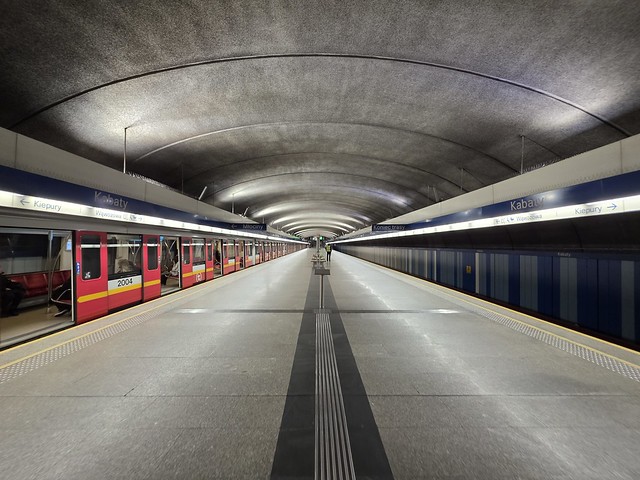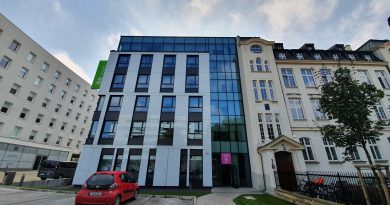Warsaw – Metro System : A1 Kabaty (Visiting Every Station)
Next on my little mission to visit the area around every metro station on the Warsaw network was Kabaty which is at the southern end of the M1 line. The physical commencement of the M1 line was officially marked by the driving of the first steel pile for the tunnel support structure in the Ursynów district on 15 April 1983 and this station opened on 7 April 1995, one of the first ones to open on the network.
As a separate note, there’s excellent signage across Warsaw.
This stone commemorates the life of Andrzej Ciołek of Żelechów (c. 1380 – c. 1448), a Polish Knight and Statesman. Rather notably, in 1404, he undertook a pilgrimage to Santiago de Compostela in Spain, reflecting his devoutness and I can imagine that it felt a long way from home at the time.
It’s rather residential, which does limit me a little bit in this riveting post. A lot of this was empty fields when the metro station was first constructed, so there’s not a huge amount of history immediately visible around this metro station.
Some sculptures in Park Przy Bażantarni. The name of the park translates to ‘By the Pheasantry’ referring to the historical royal pheasantry (Bażantarnia) that once stood nearby during the eighteenth century when the area was part of royal hunting grounds.
A decorative bridge in the park.
The Church of Blessed Władysław of Gielniów (Kościół Błogosławionego Władysława z Gielniowa), dedicated to a fifteenth century Polish Franciscan friar, preacher and poet known for his deep piety and role in promoting vernacular Polish religious hymns. He is one of Poland’s national patrons and the church has something of a modern design.
Inside the station which is quite industrial and the architectural identity, like the other stations on the initial M1 segment, was shaped during the 1983-1985 design phase led by Metroprojekt, with Jasna Strzałkowska-Ryszka as the lead designer. It’s notable incidentally that there are no advertising hoardings all along the station which is somewhat different to many other countries around the world, the initial intention was to deliver an uncluttered public space.












